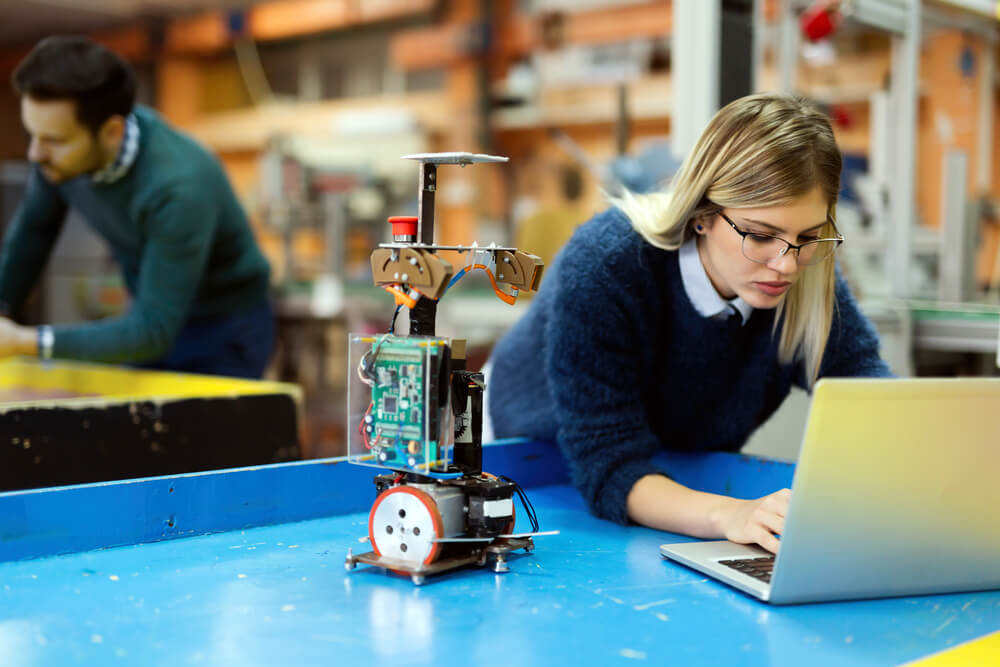Thirty-five years ago, 14 women lost their lives to a man who believed that his failure to gain entry to engineering gave him the right to kill women who had earned their place at the table. The shooting at Polytechnique Montreal was an horrific act of violence against women and against our profession.
We are two Deans of engineering with two daughters in engineering; together, we pause on December 6th to remember past tragedy — celebrate today — and think about the future.
In 1988 when we (mothers) were students, there were only 4,000 female engineering undergraduate students in all of Canada, and they represented just 12 per cent of the engineering undergraduate student body. Fast forward to today, when we (daughters) are now also in the field of engineering, and there are over 22,000 female engineering students in Canada, making up almost 25 per cent of the student body.
Since 1988, the participation of women in Canadian undergraduate engineering programs has multiplied 5.5 times. This is encouraging, but to create meaningful change, more of our female graduates need to stay in the profession. As part of our memorial today, we need to amplify their voices and our shared dreams for the future of engineering.
The increasing presence of women in our engineering programs is a strong correlator of a growing positive and inclusive culture in engineering. This shift — from isolation in small numbers, to increasingly inclusive and supportive work cultures, to true belonging — is one that we all dream of. But to fully enable this culture shift, we see an urgent need to change our professional approach.
If we want to attract and keep women in the engineering profession, we need to focus on why we build, not just what we build. Unless we include voices representing the social and environmental ecosystems which surround the things we love to build and consider how the built environment impacts these living systems, our economy and the quality of our technical work both suffer.
It is no longer enough to focus solely on the math and physics that determine whether a bridge will stay standing. We need to build the tools — and welcome the colleagues — that can expand our understanding at the edges of our technical work. That bridge has to be sited in a way that considers urban planning, heritage sites, and bicycle commuters, as well as cars.
Shifting to embrace a culture of co-creation centered on including human and environmental ecosystems is a deep cultural change that many engineering organizations are now embracing.
As Deans, we are thinking and speaking more intentionally about the trust people have in the technology they use and the factors that lead people to either trust or distrust technology. We are guiding students in conversations about inclusion and reconciliation.
Senior projects where students partner with users showcase the excitement of designing a product with the user at the table. We hear regularly from our industrial partners about faster start-up times, lower costs, less rework and better products when users are part of the design team from the beginning of the project.
As a practicing engineer, Rebecca recently built a hospital in remote South Sudan. Women in her community can now have their babies in a safe environment. Part of the essential design work was understanding cultural safety for women going to the latrine and negotiating a solution to a land dispute.
In building tools for the future, Patricia will graduate with a dual degree in Civil Engineering and Psychology in 2025. She believes a people-first design approach is needed to effect meaningful change, and that we need to make space for people to have a voice in design processes.
Softening the edges in engineering does not take away from the core technical excellence of the profession, any more than a team-based and patient-centered concept of medicine takes away from medical science.
The need for more women in our profession has never been greater.
Engineering is a team sport and as we hurtle towards an AI-infused future complicated by climate change and global instability, we need engineers who take a human-centred systems thinking approach to solve our most challenging problems.
Photo courtesy of DespositPhotos





